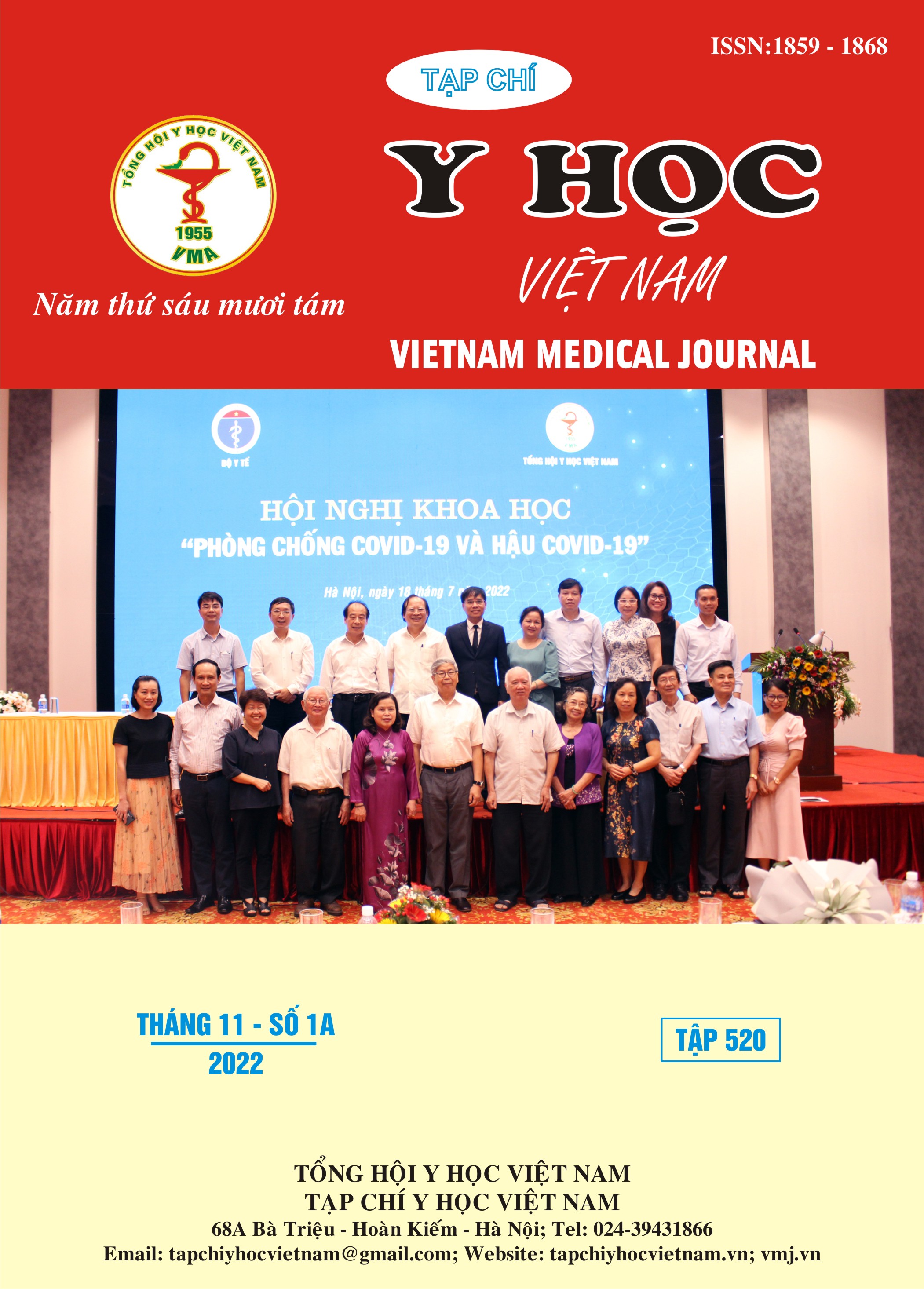KHẢO SÁT NỒNG ĐỘ NT-PROBNP HUYẾT THANH Ở BỆNH NHÂN BASEDOW MỚI CHẨN ĐOÁN TẠI BỆNH VIỆN ĐẠI HỌC Y HÀ NỘI
Nội dung chính của bài viết
Tóm tắt
Mục tiêu nghiên cứu: 1. Khảo sát nồng độ NT –proBNP huyết thanh ở bệnh nhân (BN) Basedow mới chẩn đoán tại Bệnh viện Đại học Y Hà Nội. 2. Nhận xét một số yếu tố liên quan đến nồng độ NT –proBNP huyết thanh ở BN Basedow mới chẩn đoán. Đối tượng nghiên cứu: 97 bệnh nhân mới được chẩn đoán Basedow lần đầu tại Bệnh viện Đại học Y Hà Nội từ tháng 10 năm 2021 đến tháng 9 năm 2022, được làm xét nghiệm NT –proBNP huyết thanh và siêu âm Doppler tim đánh giá một số chỉ số hình thái và chức năng tim. Phương pháp: Mô tả cắt ngang. Kết quả: Tuổi trung bình: 38,55 ± 12,84, tỉ lệ nữ/nam: 3,4/1. Nồng độ NT –proBNP ở BN nữ cao hơn BN nam, mức tăng NT – proBNP tỷ lệ thuận với nồng độ FT4 và TrAb máu, đường kính nhĩ trái và áp lực động mạch phổi tâm thu (ALĐMPTT), sự khác biệt là có ý nghĩa thống kê với p< 0,05. Kết luận: Nồng độ NT –proBNP liên quan có ý nghĩa thống kê với giới tính, FT4, TrAb huyết thanh và một số chỉ số hình thái, chức năng tim trên siêu âm ở BN Basedow mới được chẩn đoán.
Chi tiết bài viết
Từ khóa
Bệnh Basedow, mới chẩn đoán, nồng độ NT –proBNP huyết thanh, siêu âm tim
Tài liệu tham khảo
2. Nguyễn Quang Bảy (2020), Chẩn đoán và điều trị cường giáp. Hà Nội, Nhà xuất bản Y học, pp. 100-101.
3. Bodlaj, G., Pichler, R., Brandstätter, W., Hatzl‐Griesenhofer, M., Maschek, W., Biesenbach, G., & Berg, J. (2007). Hyperthyroidism affects arterial stiffness, plasma NT‐pro‐B‐type natriuretic peptide levels, and subendocardial perfusion in patients with Graves' disease. Annals of medicine, 39(8), 608-616.
4. Gu, L. Q., Zhao, L., Zhu, W., Li, F. Y., Zhang, M. J., Liu, Y., ... & Zhao, Y. J. (2011). Relationships between serum levels of thyroid hormones and serum concentrations of asymmetric dimethylarginine (ADMA) and N-terminal-pro-B-type natriuretic peptide (NT-proBNP) in patients with Graves’ disease. Endocrine, 39(3), 266-271.
5. G. J. Kahaly, L. Bartalena, L. Hegedüs, L. Leenhardt, K. Poppe, S. H. Pearce (2018), 2018 European Thyroid Association Guideline for the Management of Graves' Hyperthyroidism. European thyroid journal.7(4):167-186.
6. Keiko Kato, Hitomi Murakami, Osamu Isozaki, et al. (2009), “Serum Concentrations of BNP and ANP in patients with Thyrotoxicosis”, Endocrine Journal, 56(1), pp. 17-27.
7. Masakazu Kohno, Takeshi Horia, Kenichi Yasunari et al. (1993), “Stimulation of Brain Natriuretic Peptide Release from the Heart by Thyroid Hormone”, Matabolism, 42(8), pp. 1059-1064.
8. McDonagh TA, Metra M, et al. 2021 ESC Guidelines for the diagnosis and treatment of acute and chronic heart failure: Developed by the Task Force for the diagnosis and treatment of acute and chronic heart failure of the European Society of Cardiology (ESC). With the special contribution of the Heart Failure Association (HFA) of the ESC. European J of Heart Fail. 2022;24(1):4-131. doi:10.1002/ejhf.2333
9. Joyce Man, Phil Barnett, Vincent M. Christoffels (2017), “Structure and function of the Nppa-Nppb cluster locus during heart development and disease”, Cellular and Molecular Life Sciences, doi:10.007/s00018-017-2737-0.
10. Richard W. Troughton, A. Mark Richards (2009), “B-Type Natriuretic Peptides and Enchocardiographic Measures of Cardiac Structure and Function”, Cardiovascular Imaging, 2(2), pp. 216-225.


